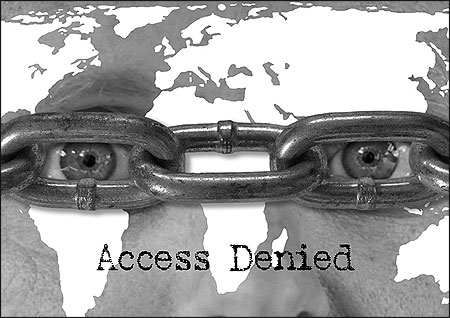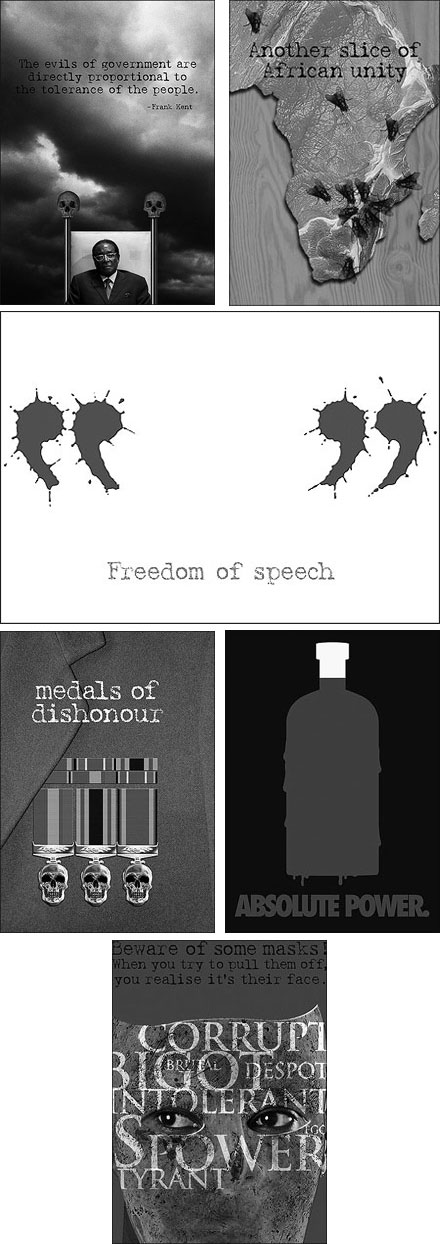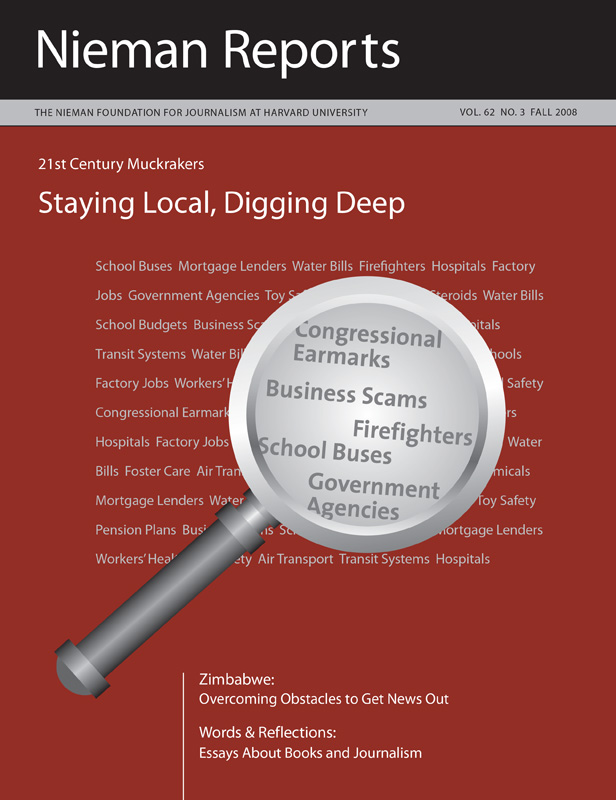
The arresting images (above and below) created by Zimbabwean graphic artist Chaz Maviyane-Davies are editorial comments presented as art.
Stifled by racial discrimination in white minority-ruled Rhodesia, Maviyane-Davies went into exile and studied art in Britain. He returned to majority-ruled Zimbabwe in 1982 where he reveled in the liberation of his country and established himself as a sought-after graphic artist, both locally and internationally. He became known for combining his commercial work with messages of African liberation and human rights.
“If design is used to sell perfume and lipstick, why can’t it also be used to promote democracy and the values of human rights? I would not be happy as an artist if I didn’t do that,” said Maviyane-Davies.
RELATED WEB LINK
See more of Maviyane-Davies' work at www.maviyane.com»When Zimbabwe was wracked by state violence in the run-up to the June 2000 election, Maviyane-Davies launched his own campaign in which he designed a graphic image commenting on the election every day for a month. He created another series of daily graphic commentaries during the presidential election campaign in March 2002. “I was horrified to see my country descending into dictatorship right before my eyes,” he told me. “I created these images to stay sane.… Design is my weapon. I call my work ‘creative defiance.’”
His stark, sharp designs with pointed antigovernment messages traveled across the Internet and were reproduced throughout Zimbabwe and abroad. Sensing that he and his family were no longer safe, Maviyane-Davies left Zimbabwe. He is now professor of communication design at the Massachusetts College of Art in Boston, and he continues to create designs that promote democracy and human rights. — Andrew Meldrum
Graphic Art as Political Commentary
21st Century Muckrakers: Staying Local, Digging Deep
On this point, editors, reporters and newspaper readers agree. In a time of cutbacks and a shrinking news hole, at a moment when print is in peril and digital is dominant, watchdog and investigative reporting must remain at the core of journalism’s mission. In this third part of our 21st Century Muckrakers project, editors and reporters speak to how metro and regional newspapers are confronting the enormous challenges of today and offer clues to where this kind of reporting will likely be headed tomorrow.



